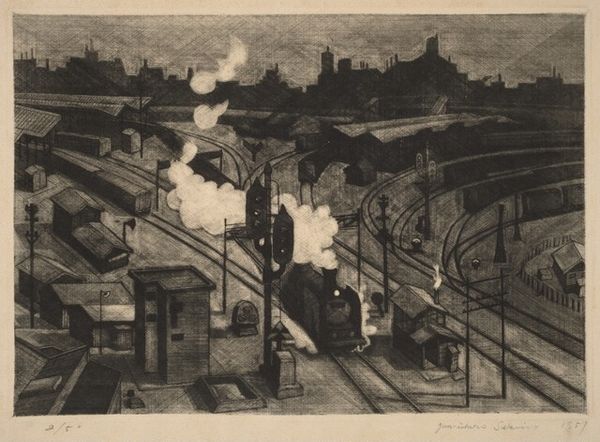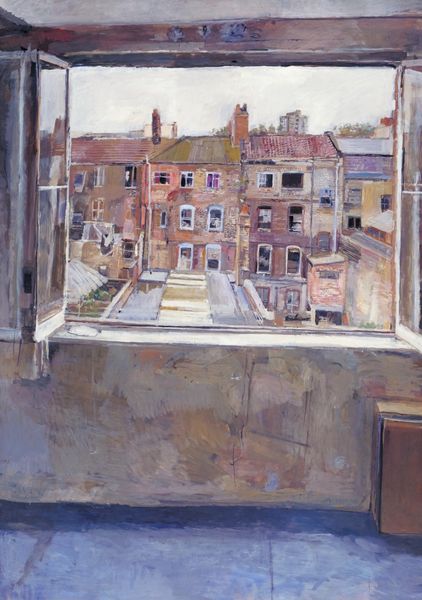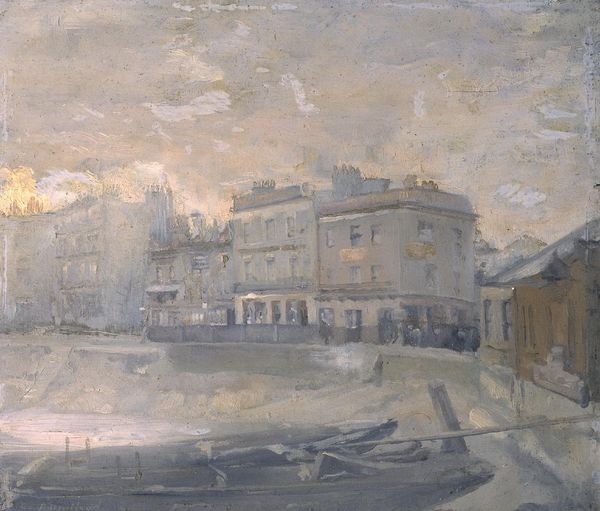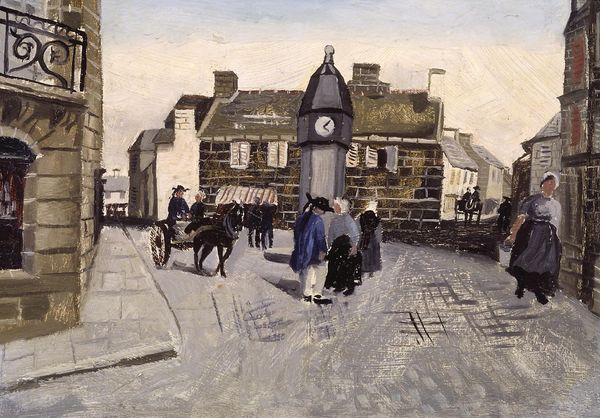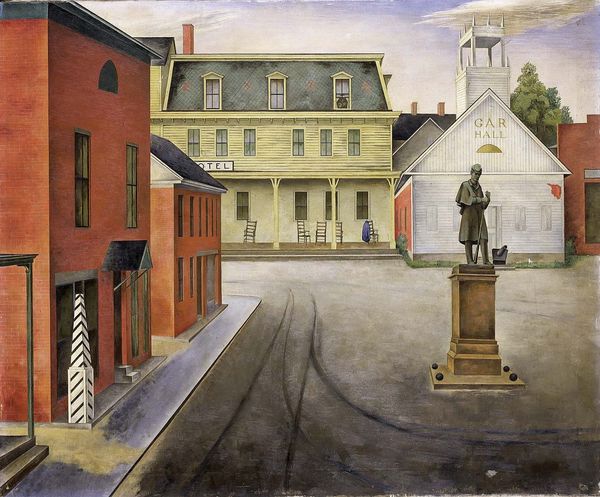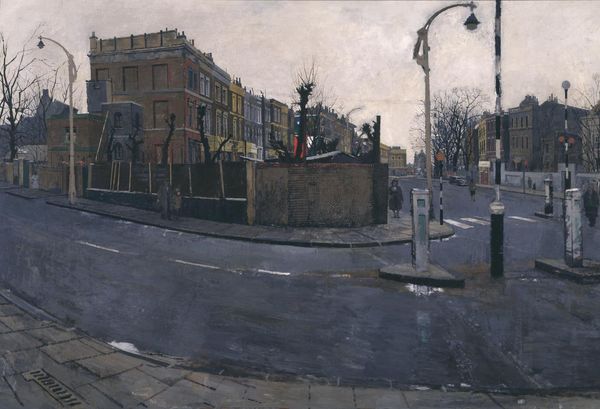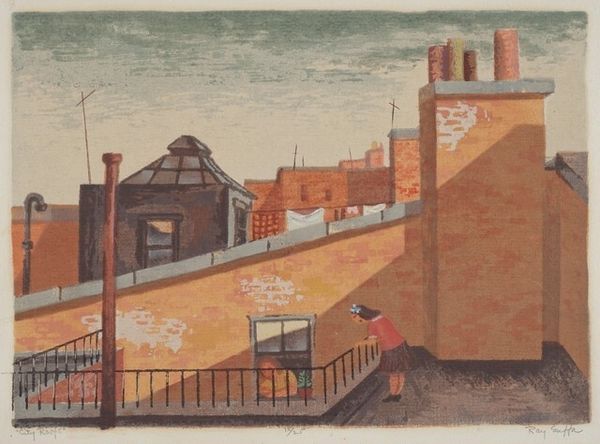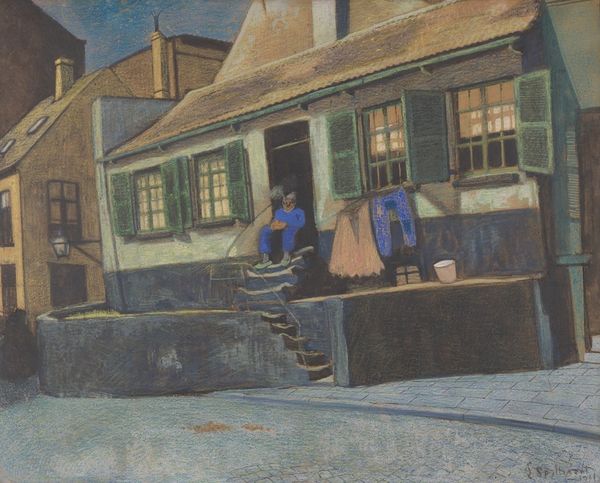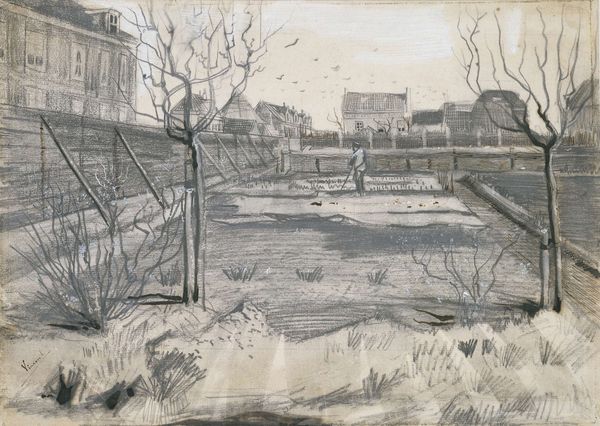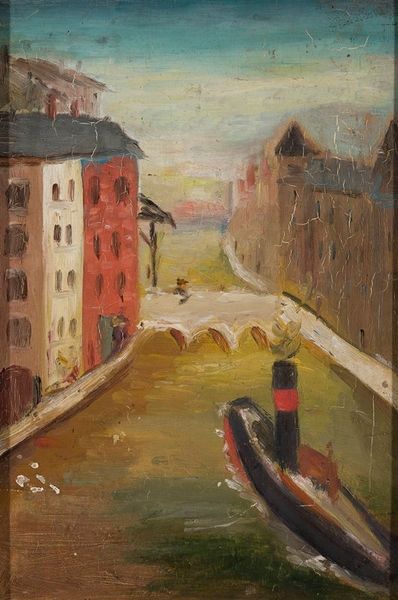
Dimensions: support: 708 x 908 mm
Copyright: © The estate of Carel Weight | CC-BY-NC-ND 4.0 DEED, Photo: Tate
Editor: Here we have Carel Weight’s “Clapham Junction.” Looking at the crisscrossing perspective of the cobblestone, the eye is really drawn into the scene. What strikes you about the composition? Curator: Note the dynamism achieved through the convergence of lines – the road, the building edges. The artist skillfully employs a restricted palette, primarily browns and grays, lending a somber tone. How does this limited color range affect your reading? Editor: It adds to the feeling of unease, almost bleakness. It seems to emphasize the shapes and forms. Curator: Precisely. See how the artist uses simplified forms, almost geometric in nature, to construct the scene. The buildings, the figures – all rendered with a deliberate lack of detail. What does that imply? Editor: I see, the details aren't as important as the emotion of the scene. Thanks for that insight. Curator: Indeed, it’s the structure and its formal elements that carry the emotional weight, as you rightly observed.
Comments
tate 7 months ago
⋮
http://www.tate.org.uk/art/artworks/weight-clapham-junction-t02325
Join the conversation
Join millions of artists and users on Artera today and experience the ultimate creative platform.
tate 7 months ago
⋮
This work depicts the original high-level entrance to Clapham Junction station, looking east towards Lavender Hill. To its right, across the road, can be seen the clock tower of Arding and Hobbs department store. Weight noted that he was 'fascinated by the switch-back aspect of the composition which suggested violent movement. The rather eerie architecture supports this feeling. It is a district where violence is a frequent feature and where robbery is commonplace'. In 'Clapham Junction' Weight heightens the atmosphere of panic and suspense by emphasising the angles of the composition, by the lines of force which accentuate the movements of the figures, and by the truncated figure in the foreground. Gallery label, August 2004
